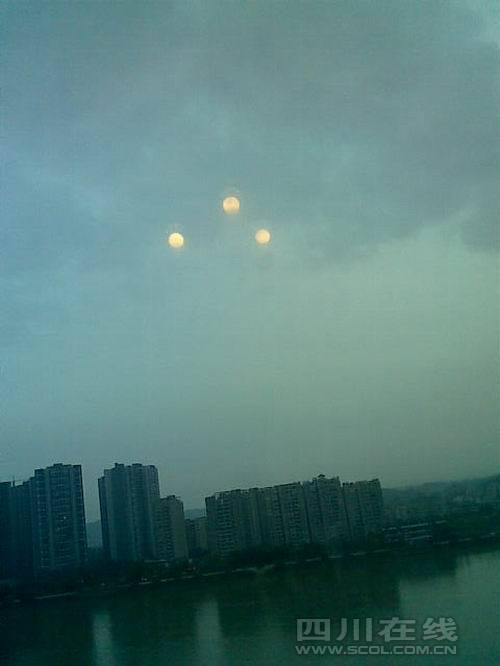'Suns' hover over Sichuan, claimed as UFOs
 |
|
"Probably, they are sun dogs," said Professor Wang Sichao, a researcher of the Purple Mountain Observatory of the Chinese Academy of Sciences. |
According to Wang, a sundog, or known scientifically as a perihelion, is a common bright circular spot on a solar halo. It's an atmospheric optical phenomenon primarily associated with the reflection or refraction of sunlight by small ice crystals making up cirrus or cirrostratus clouds.
However, the professor added that on that night the region shouldn't have had any sundogs.
"It's quite strange," Wang said.
He suggested that more photos taken from different areas and more witness reports are needed to solve the mystery.
"Sundog"
When sunlight passes through the sides of a flat crystal, both the angle of the sun's rays and the orientation of the crystals affect the shape and color of the sundogs. Misaligned or wobbling crystals produce colorful and elongated sundogs, while light passing through the crystal in non-optimal deviation angles (up to 50°) produces the "tail" of the sundog that stretches away from the sun. As refractions are dependent on wavelengths, the sundogs tend to have red inner edges while the colors farther from the sun tend to be more bluish-white as colors increasingly overlap.
 0
0 






